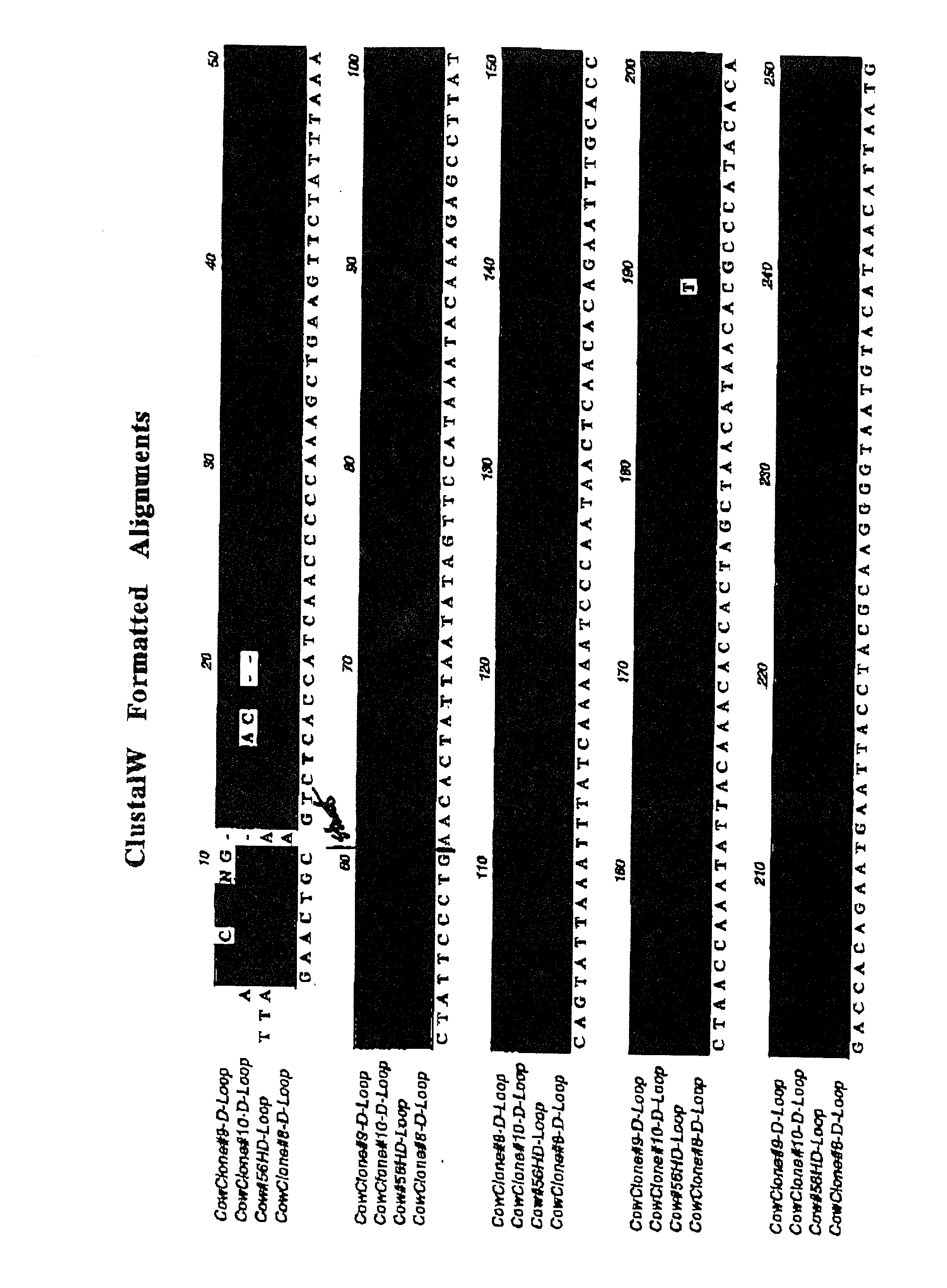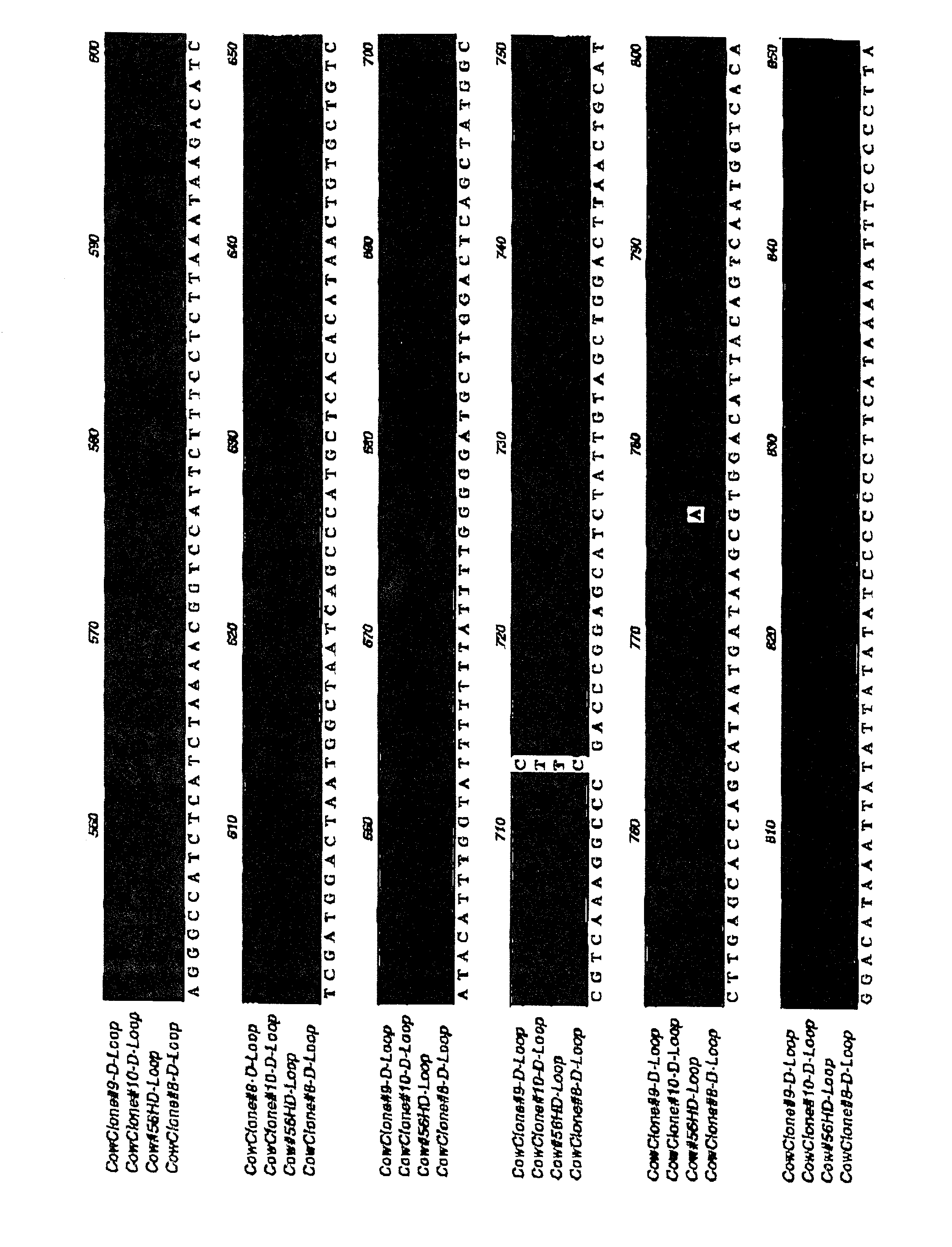Method for generating immune-compatible cells and tissues using nuclear transfer techniques
a nuclear transfer and immune-compatible technology, applied in the field of nuclear transfer methods for generating immune-compatible cells and tissues, can solve the problems of inability to provide suitable transplant organs to patients whose cells or organs are lacking, and the availability of cells is not suitable for transplantation, so as to achieve the effect of increasing the incidence and reducing the number of mitochondrial dna deletion mutations
- Summary
- Abstract
- Description
- Claims
- Application Information
AI Technical Summary
Benefits of technology
Problems solved by technology
Method used
Image
Examples
example 2
[0071] This example was designed to test teratoma formation in an immune-compromised animal model. This example is relevant to the methods whereby cloned, nuclear transfer-generated cells from a patient in need of a transplant may be grown in a SCID mouse or other immune-compromised animal in order to generate differentiated cells for isolation and design of engineered tissues for transplant. ES cells transfected with GFP were derived from two adult Holstein steers (two different ES cell lines were derived from each animal). ICMs were derived from 12-day-old blastocysts.
[0072] Cell Preparation and Injection Procedure
[0073] Cells were cut into pieces (sections of no more than about 100 cells each) and loaded into a 1 ml syringe, no more than 200 microliters each, and preferably 100 microliters. ICMS were mechanically isolated and loaded into a 1-ml syringe 100 to 150 microliters.
[0074] Cells were kept at room temperature in HECM-Hepes.
[0075] Twenty-two-gauge needles were used for inj...
example 3
[0084] To realize the full potential of therapeutic cloning, it will be important to reconstitute more complex tissues and organs in vitro. Although cloning would eliminate or greatly alleviate the most critical problem--immune compatibility--there is still the task of putting the cells together to create or recreate functional structures. For example, myocardial infarction is one of the most common diagnoses occurring in hospitalized patients in western countries. While injection of individual or small groups of cardiomyocytes could aid in the treatment of some localized infarcts, this approach is unlikely to be of value in patients with more extended ischemic injury, where the risk of scar formation, cardiac rupture and other complications is much greater. Tissue engineering offers the possibility of organizing the cells into three-dimensional myocardial "patches" which could be used to repair the damaged portions of the heart. For myocardium and other relatively simple tissues, s...
example 4
[0113] The above results suggest that it is possible to generate cloned tissues for transplantation by nuclear transfer into an allogeneic background, and that differentiated cells and tissues isolated or constructed from cloned teratomas or cultures of embryonic cells can be transplanted back into the donor animal without significant signs of rejection. To further confirm that nuclear transfer technology has the potential to eliminate the immune responses associated with the transplantation of cells and organs despite mitochondrial mismatch, the inventors next set out to perform transplants between full grown clones having different mitochondrial backgrounds.
[0114] For these experiments, studies are underway with two groups of animals: (1) three cloned cows (animals CL53-8, CL53-9, and CL53-10) at Trans Ova and (2) five cloned goats at LSU. Split-thickness skin grafts (approximately 2-3 cm diameter) have been (or will be) carried out between the two groups of animals. Self-grafts w...
PUM
| Property | Measurement | Unit |
|---|---|---|
| porosity | aaaaa | aaaaa |
| diameter | aaaaa | aaaaa |
| diameter | aaaaa | aaaaa |
Abstract
Description
Claims
Application Information
 Login to View More
Login to View More - R&D
- Intellectual Property
- Life Sciences
- Materials
- Tech Scout
- Unparalleled Data Quality
- Higher Quality Content
- 60% Fewer Hallucinations
Browse by: Latest US Patents, China's latest patents, Technical Efficacy Thesaurus, Application Domain, Technology Topic, Popular Technical Reports.
© 2025 PatSnap. All rights reserved.Legal|Privacy policy|Modern Slavery Act Transparency Statement|Sitemap|About US| Contact US: help@patsnap.com



